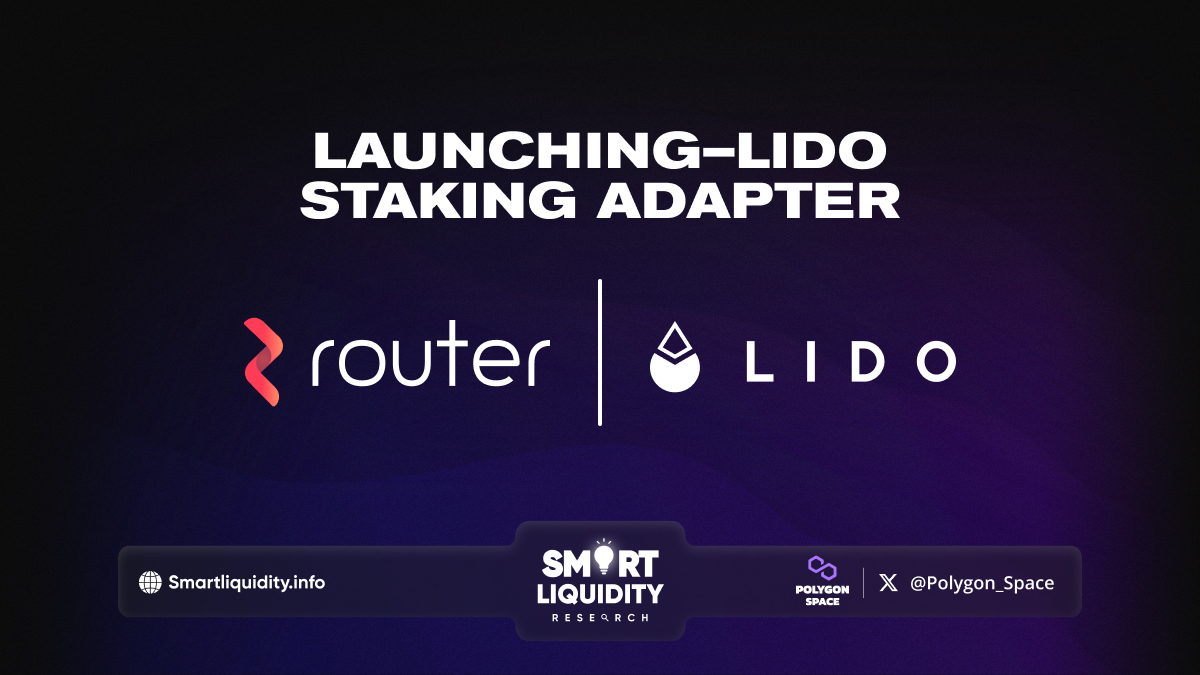Launching Lido Staking Adapter


Router Protocol is excited to introduce the Lido Staking Adapter, designed to make Staking on Lido as effortless as a walk in the park.
Check out their POC here: https://lido.routerintents.com/apps/lido
Understanding Lido and its Offering
Firstly, Lido DAO offers a non-custodial staking solution tailored for various blockchains, including Ethereum, Polygon, Arbitrum, and more. In essence, Lido functions as a platform where both individuals and businesses can combine their token assets for staking on Proof-of-Stake (PoS) based blockchain networks, earning a range of rewards in return.
Furthermore, one of Lido’s key features is its ability to enable users to stake tokens without the need to lock assets, meet minimum thresholds, or manage staking infrastructure independently. These barriers are often deterrents to participating in staking activities.
Moreover, on the Lido platform, users enjoy dual incentives: rewards from tokens staked on the Layer-1 network, and additional rewards via a staked reward token pegged 1:1 to the underlying staked assets. Lido terms this innovative approach “liquid staking.”
In summary, Lido aims to simplify and democratize staking participation by offering a user-friendly platform with attractive rewards.
What Does a User’s Intent Say?
A simple straightforward answer to the question is, a user just wants Lido ETH or the wstETH on let’s say Arbitrum!
And how does a user get that?
- Swap for Lido ETH on Arbitrum
- Swap to ETH on Arbitrum, bridge to Ethereum, stake on Lido, bridge back to Arbitrum
If the user wants to invest a smaller amount then they could go to a DEX and swap their assets for stETH. They will need to figure out the right DEX and the platform to do this.
However, if this user has a big holding the above process won’t work well as it would incur high slippage/swap fees. So, they would first need to exchange their tokens for ETH via a DEX, bridge the assets to Ethereum, and finally connect their wallet to Lido.
And then stake their assets and get stETH. Post this the user would need to bridge the tokens back to Arbitrum since they want to hold Lido ETH on Arbitrum.
However, this whole process is very complex. First the user needs to figure out which path is giving them the most optimal path for best returns.
A user now has finally staked their ETH/MATIC and received stETH/stMTIC.
But Now Enters the Lido Adapter
With their Adapter, they’re simply saying, you just need one dApp and one click.
It does not matter which chain you’re on or what tokens you’re holding, you simply tell us your intent and the most optimised path for you will be chosen be it just swap or be it the whole journey of bridging, staking and bridging back.
Everything will be done on a single interface and in a single step! Including the intent of getting your staked Lido ETH/MATIC on your desired network.
Let’s elaborate this with an example –
- You are on Avalanche Network
- You have USDC
- You want to stake on Lido
- You want your wstETH on Linea
And now, see this –
All your intents are carried out in One, just ONE step!
So, what are your plans for the time and money you saved?
About Router Protocol
Router Protocol is an secure, composable, and modular framework for building interoperable applications.
About Lido
Lido is the name of a family of open-source peer-to-system software tools deployed and functioning on the Ethereum and Polygon blockchain networks.
The software enables users to mint transferable utility tokens, which receive rewards linked to the related validation activities of writing data to the blockchain while the tokens can be used in other on-chain activities.
REQUEST AN ARTICLE




